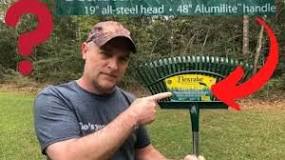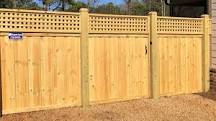So, how often should you dethatch a lawn? The answer is once a year for most lawns, but it really depends on your grass type, climate, and how well you take care of your yard. Dethatching is like giving your lawn a fresh start, and doing it at the right time can make all the difference.
What is Dethatching?
Dethatching is the process of removing thatch—a layer of dead grass, roots, and debris that builds up on the soil surface. While a little thatch can be beneficial (it helps retain moisture), too much can suffocate your grass and lead to various lawn problems.
Signs Your Lawn Needs Dethatching
Before you grab that dethatcher, check for these signs:
1. Thatch Layer Thickness
If the thatch layer is more than half an inch thick, it’s time to take action. You can check this by pulling back some grass and measuring the layer.
2. Poor Drainage
If water tends to pool on your lawn instead of soaking in, excessive thatch could be the culprit.
3. Patchy Growth
If your lawn looks uneven or has bare spots, it might be struggling under a thick thatch layer.
Best Time to Dethatch
Timing is everything! The best time to dethatch is during the growing season when your grass can recover quickly. For cool-season grasses, aim for early spring or early fall. If you’ve got warm-season grasses, late spring or early summer is your sweet spot.
How to Dethatch Your Lawn
Ready to dive in? Here’s how to do it:
1. Mow Your Lawn
Start by mowing your lawn a bit shorter than usual. This makes it easier to access the thatch.
2. Choose Your Tools
You can use a dethatching rake for small areas or rent a dethatching machine for larger lawns.
3. Work in Rows
Dethatch in rows, going one direction first and then crossing over at a right angle. This ensures you’re getting all those pesky clumps.
4. Clean Up
After dethatching, rake up the debris and either compost it or dispose of it properly.
Summary
Dethatching your lawn once a year is generally enough to keep it healthy and thriving. Just remember to look out for those signs that indicate it’s time to get to work! With proper timing and technique, you’ll have a lush lawn that’s the envy of the neighborhood.
FAQ
How do I know if my lawn needs dethatching?
Check the thickness of the thatch layer—if it’s over half an inch, it’s time to dethatch! Also, look for signs like poor drainage and patchy growth.
Can I dethatch my lawn too often?
Yes! Over-dethatching can stress your grass and lead to more problems than it solves. Stick to once a year unless your lawn really needs it.
What happens if I don’t dethatch?
If you skip dethatching, the thatch can build up too much, leading to poor water absorption and unhealthy grass growth.
Should I fertilize after dethatching?
Absolutely! Fertilizing after dethatching helps your lawn recover faster and promotes healthy growth.







